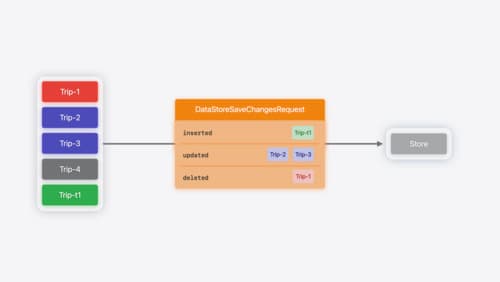How can I import large sets of data with core data
Asked on 2024-08-04
1 search
To import large sets of data with Core Data, you can leverage the new features and capabilities introduced in SwiftData, which is designed to simplify the process of building your app's model layer and persisting it across launches. Here are some key points and sessions that might help you:
-
Custom Data Stores:
- SwiftData allows you to create custom data stores, which can be useful for handling large data sets. You can implement your own data store using the new Datastore protocol, which supports various persistence backends like JSON files, SQLite, or even remote web services.
- For more details, you can refer to the session Create a custom data store with SwiftData.
-
Model Container Customization:
- You can customize your model container to suit your specific needs, including setting the URL of the data on disk and using custom data stores.
- This is covered in the session What’s new in SwiftData.
-
Efficient Data Handling:
- SwiftData provides features like indexing and unique constraints to make your queries more efficient, which is crucial when dealing with large data sets.
- You can learn more about these features in the session What’s new in SwiftData.
-
History Tracking:
- SwiftData also includes a history API that keeps track of all changes made to the data store, which can be useful for syncing large data sets with remote services.
- This is discussed in the session What’s new in SwiftData.
Relevant Sessions
By leveraging these features and sessions, you can efficiently import and manage large sets of data in your app using Core Data and SwiftData.

What’s new in SwiftData
SwiftData makes it easy to add persistence to your app with its expressive, declarative API. Learn about refinements to SwiftData, including compound uniqueness constraints, faster queries with #Index, queries in Xcode previews, and rich predicate expressions. Join us to explore how you can use all of these features to express richer models and improve performance in your app. To discover how to build a custom data store or use the history API in SwiftData, watch “Create a custom data store with SwiftData” and “Track model changes with SwiftData history”.

Platforms State of the Union
Discover the newest advancements on Apple platforms.

Create a custom data store with SwiftData
Combine the power of SwiftData’s expressive, declarative modeling API with your own persistence backend. Learn how to build a custom data store and explore how to progressively add persistence features in your app. To get the most out of this session, watch “Meet SwiftData” and “Model your schema with SwiftData” from WWDC23.
